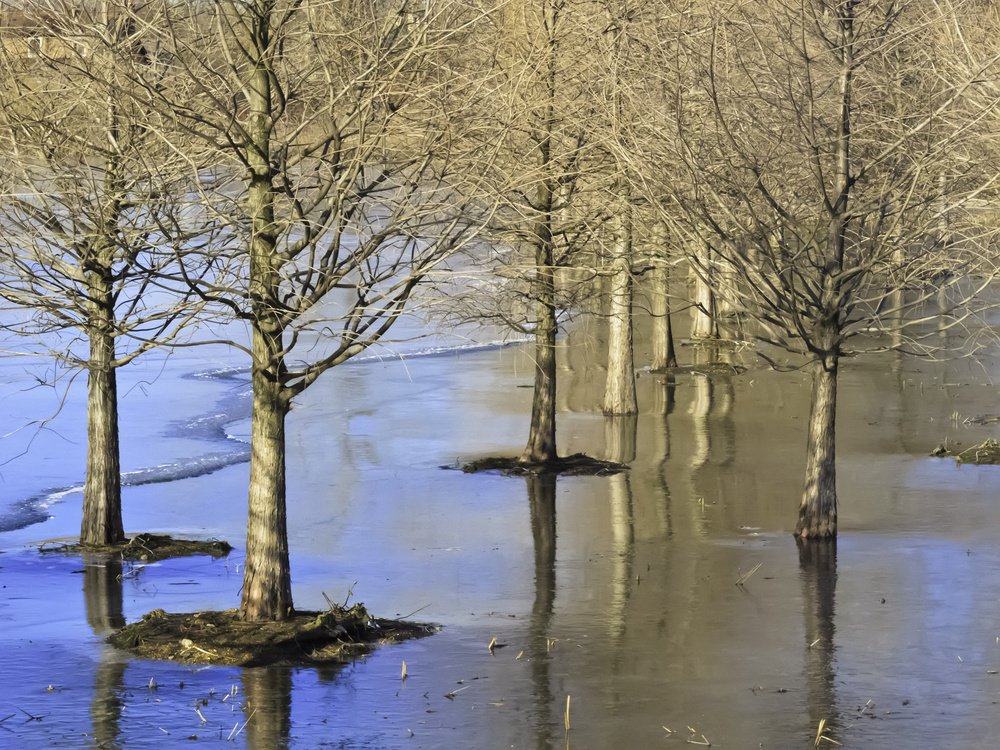“The Uninhabitable Earth,” David Wallace-Wells’s new book about how climate change will affect human life, begins, “It is worse, much worse, than you think.”
In superhot cities, roads will melt and train tracks will buckle. At five degrees of warming, much of the planet would be in constant drought. With just six metres of sea-level rise—an optimistic projection—land where three hundred and seventy-five million people currently live will be underwater. Some of the apocalyptic stories aren’t from the future but our recent past: in the Paradise Camp Fire of late 2018, people fleeing the flames “found themselves sprinting past exploding cars, their sneakers melting to the asphalt as they ran.”
To anyone who has been paying attention, the broad strokes of “The Uninhabitable Earth” come as no surprise. We are racing toward—in fact have already entered—an era of water shortage, wildfire, sea-level rise, and extreme weather. To read the book is to ask hard questions about one’s own future. When will the city where I live be flooded? Where should I live when it does? Where will my future children live? Should I have children at all?

Yet Wallace-Wells has also stressed that there is no place for fatalism. In an interview with NPR, he said that “every inch of warming makes a difference”—we cannot stop the process of warming altogether, but we can control whether climate change yields a future that is apocalyptic or instead “merely grim.” Several years ago, I asked the climate activist and writer Bill McKibben how he was able to keep from falling into depression, given how much time he devotes to thinking about climate change. He answered that fighting is the key—it’s only despairing if you think that you can’t take on the problem. “It’s the greatest fight in human history, one whose outcome will reverberate for geologic time, and it has to happen right now,” he said.
In 2008 and 2009, the American Psychological Association put together a task force to examine the relationship between psychology and climate change. It found that, although people said that climate change was important, they did not “feel a sense of urgency.” The task force identified several mental barriers that contributed to this blasé stance. People were uncertain about climate change, mistrustful of the science, or denied that it was related to human activity. They tended to minimize the risks and believe that there was plenty of time to make changes before the real impacts were felt. Just ten years later, these attitudes about climate feel like ancient relics. But two key factors, which the task force identified as keeping people from taking action, have stood the test of time: one was habit, and the other was lack of control. “Ingrained behaviors are extremely resistant to permanent change,” the group stated. “People believe their actions would be too small to make a difference and choose to do nothing.”
Wallace-Wells hits this note in his book, too, writing, “We seem most comfortable adopting a learned posture of powerlessness.” As uncertainty and denial about climate have diminished, they have been replaced by similarly paralyzing feelings of panic, anxiety, and resignation. As we begin to live through the massive dangers imparted by climate change, as one psychologist put it to me, “We are in psychological terrain, whether we like it or not.”
John Fraser is a conservation psychologist who has studied burnout and trauma among people doing environmental work. “We have to move beyond terrorizing people with disaster stories,” he told me. Responses to climate change are often discussed as a spectrum, with denial and disengagement at one end and intense alarm on the other. We are getting more alarmed. In 2009, a Yale and George Mason study grouped Americans’ responses to climate into six categories: alarmed, concerned, cautious, disengaged, doubtful, and dismissive. In 2009, eighteen per cent were alarmed; in 2018, that number had risen to twenty-nine per cent.
Fraser wants people to feel not alarmed but activated, and he takes a relentlessly positive, solutions-oriented attitude. “We got trains all the way across America in a few years, and people on the moon in a few years,” he said. And ideas for climate moonshots abound: negative-carbon-emission plants are prohibitively expensive, but they do exist; some advocate for reviving nuclear power; proponents of a Green New Deal call for ending fossil-fuel extraction and subsidies, and radically expanding public transportation. In Silicon Valley, ideas are emerging that rely less on politics than on technology, like flooding some deserts to grow carbon-sucking algae beds, or using electrochemistry to get rocks to absorb carbon from the air. Fraser believes that the most productive way to communicate about environmental problems is to emphasize the positive solutions that exist. “What we need to promote is hope,” he said. “The first step to a healthy response is feeling that the problem is solvable.”
“Is it appropriate to feel terrified? No,” Fraser said. “Because you just shut down.”
Read more: New Yorker



